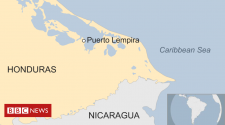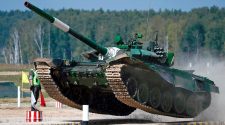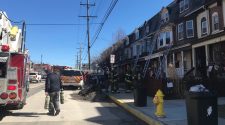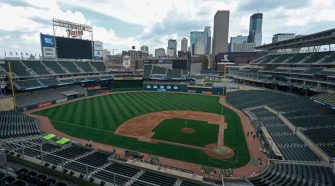This image taken from video shows damage from a World War II-era B-17 bomber that crashed at Bradley International Airport in Windsor Locks, Conn., on Wednesday. (National Transportation Safety Board/AP)
Federal investigators spent Thursday combing through the charred wreckage of the World War II-era bomber that crashed shortly after takeoff at a Connecticut airport Wednesday, killing seven of the 13 people aboard.
Jennifer Homendy, a member of the National Transportation Safety Board, which is leading the crash probe, said that there was significant fire damage to the aircraft but that investigators have been able to recover its wings, tires, all four engines and tail. Investigators also are examining the plane’s maintenance and inspection records, and have begun interviewing pilots affiliated with the Collings Foundation, which owns the aircraft.
Still, she said, many questions remain unanswered. Records show the plane was inspected in January, but it is not clear whether inspectors found any issues. Homendy said they are also trying to determine whether the plane experienced any problems before takeoff Wednesday.
Homendy’s update came as Connecticut state officials released the names of the seven people who died after the Boeing B-17 bomber crashed as it was trying to land at Bradley International Airport. Six people — five on the plane and one on the ground — also were injured in the crash.
Releasing the names, James Rovella, commissioner of the Connecticut Department of Emergency Services and Public Protection, asked that the families be shown “the utmost respect and dignity.”
The victims include a retired police officer and the plane’s pilot and co-pilot. The oldest was 75, the youngest 48.
Those who died are the plane’s pilot, Ernest McCauley, 75, of Long Beach, Calif.; co-pilot, Michael Foster, 71, of Jacksonville, Fla.; passengers David Broderick, 56, of West Springfield, Mass.; Gary Mazzone, 66, of Broad Brook, Conn.; James Roberts, 48, of Ludlow, Mass.; Robert Riddell, 59, of East Granby, Conn.; and Robert Rubner, 64, of Tolland, Conn.
In some cases, Rovella said, the bodies were badly burned, making it difficult for the state’s medical examiner to make positive identifications for at least two victims. However, the passenger manifests have helped them determine who was on the plane. Of the six people who were injured, three have been released, hospital officials said.
Mazzone was a retired police captain with the Vernon Police Department, where he served for 22 years. After retiring, he worked as an inspector with the Connecticut Division of Criminal Justice. He was active with Special Olympics Connecticut and was part of the group’s hall of fame.
“Captain Mazzone had a distinguished career and was a graduate of the FBI National Academy,” Capt. John Kelley said in a note sent to officers. “He will be missed by his family, friends and co-workers.”
Rovella credited quick action by first responders. He also said one passenger, a member of Connecticut’s National Guard, played a key role in saving his fellow passengers.
The plane left Bradley Airport around 9:45 a.m. Wednesday and was in the air for only a few minutes when its crew messaged the control tower and said it was experiencing engine trouble, Homendy said. The plane circled back but hit several approach lights as it attempted to land, she said. Images of the crash on television and social media showed flames and huge plumes of black smoke at the site of the crash.
Homendy said McCauley, the plane’s pilot, had flown for the Collings Foundation, which is based in Massachusetts, for 20 years. He had over 7,300 hours in the B-17, reportedly the highest of any pilot in the United States. He also served as the foundation’s safety officer. Foster, the first officer, had been a volunteer at the foundation for five years.
The B-17 bomber, dubbed the “Flying Fortress,” was at the Bradley airport as part of a special display of vintage aircraft sponsored by the Collings Foundation. As part of the event, members of the public could fly on the B-17 in exchange for a donation. The plane was built in 1944 and acquired by the foundation in 1986.
In a statement posted on its website, the foundation said it is fully cooperating with officials to determine the cause of the crash and would comment further when more details are known:
“Our thoughts and prayers are with those who were on that flight and we will be forever grateful to the heroic efforts of the first responders at Bradley.”
According to the Federal Aviation Administration, there are 16 Boeing B-17 aircraft registered in the United States.
Homendy said there have been 21 accidents involving World War II-era bombers since 1982, in which 23 people have died. Three of those involved B-17 aircraft but not the plane that crashed Wednesday.
She said the B-17 involved in Wednesday’s fatal crash had been involved in two previous incidents. In 1987, it overran a runway at an air show in western Pennsylvania, and in 1995, its landing gear failed to deploy at event in Nebraska.
NTSB officials are expected to spend seven to 10 days at the crash site and will issue a preliminary report shortly after. Homendy said it will take 12 to 18 months for the full investigation to be completed.


















